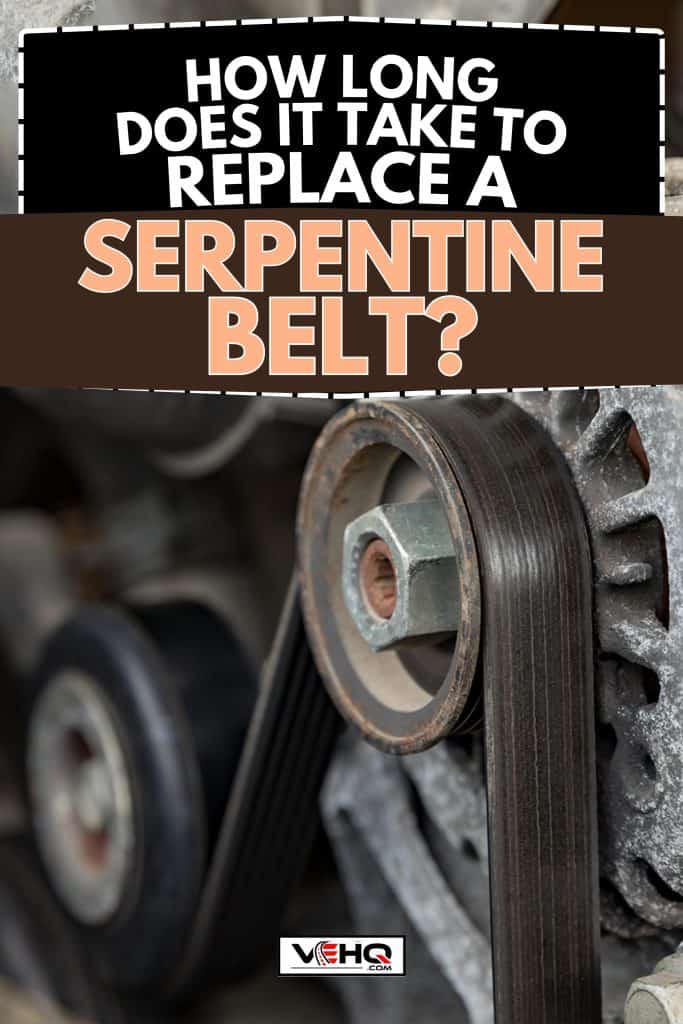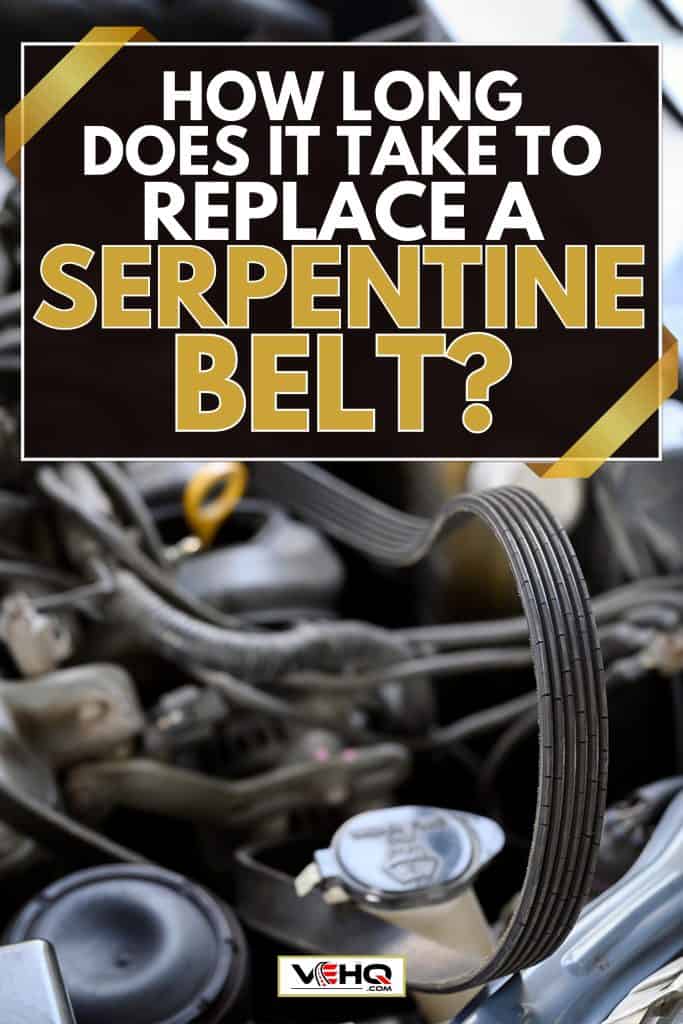Is the incessant squealing noise from your engine driving you crazy? Don't worry, it's likely just your serpentine belt that needs replacing.
This unsung hero of your vehicle powers multiple systems, from your alternator to your power steering pump. But how long does it take to replace it?
We know you're eager to get back on the road, and that's why you're in the right place. In this article, we'll not only answer that pressing question but also show you how easy it can be to replace your serpentine belt.
While the time it takes to replace the belt may vary depending on your vehicle's engine and accessibility, we've got you covered.
By the end of this article, you'll be armed with the knowledge and confidence you need to tackle this task like a pro.
So, fasten your seatbelt and get ready to dive into the world of serpentine belt replacement. We promise you won't regret it!
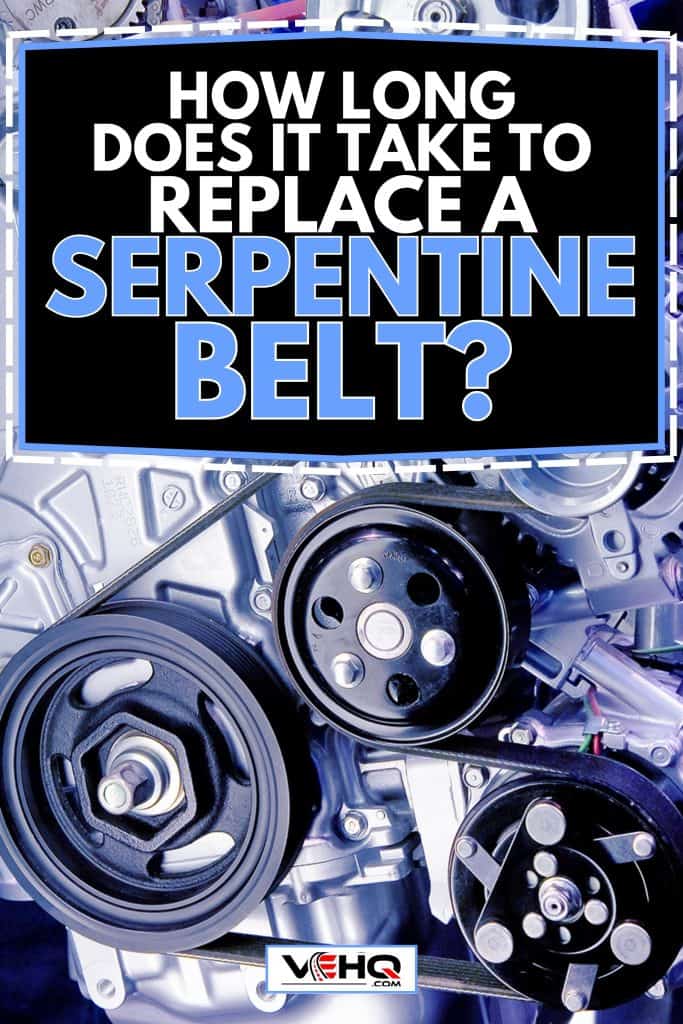
How Long Does It Take To Replace A Serpentine Belt?
Imagine this: you're cruising down the highway and notice your car's temperature gauge rising or your warning lights come on.
Could it be the serpentine belt? If so, how long does it take to replace one? Don't worry; we are here to help you answer this question and guide you through the process.
First, let's shed some light on the importance of the serpentine belt.
This often-unsung hero is responsible for powering vital components of your vehicle, such as the alternator, water pump, and air conditioning. With its critical role, knowing when to replace it and how long it takes becomes essential for car owners.
There are a few factors to consider when estimating the time needed to replace a serpentine belt. From the make and model of your vehicle to your level of experience, these factors play into how quickly you can tackle this DIY repair.
For those with some mechanical expertise, replacing a serpentine belt can take anywhere from 15 minutes to an hour.
However, first-timers may require a bit more time to familiarize themselves with the process and necessary tools. Typically, a ⅜-inch ratchet is used to relieve tension on the belt and remove it.
A key aspect of this process is locating the serpentine belt routing diagram, which can usually be found in the engine compartment or the vehicle owner's manual.
Now, let's talk about belt replacement frequency. Generally, most serpentine belts should be replaced every 60,000-100,000 miles.
However, it's always best to visually inspect the belt for wear and tear, especially if you hear strange noises or see oil on the belt.
Regular inspections and timely replacements will help keep your car running smoothly and prolong the life of other connected components.
So, don't hesitate to grab those tools and follow a reliable guide to get your car back on the road in no time.
Is Replacing The Serpentine Belt Easy?
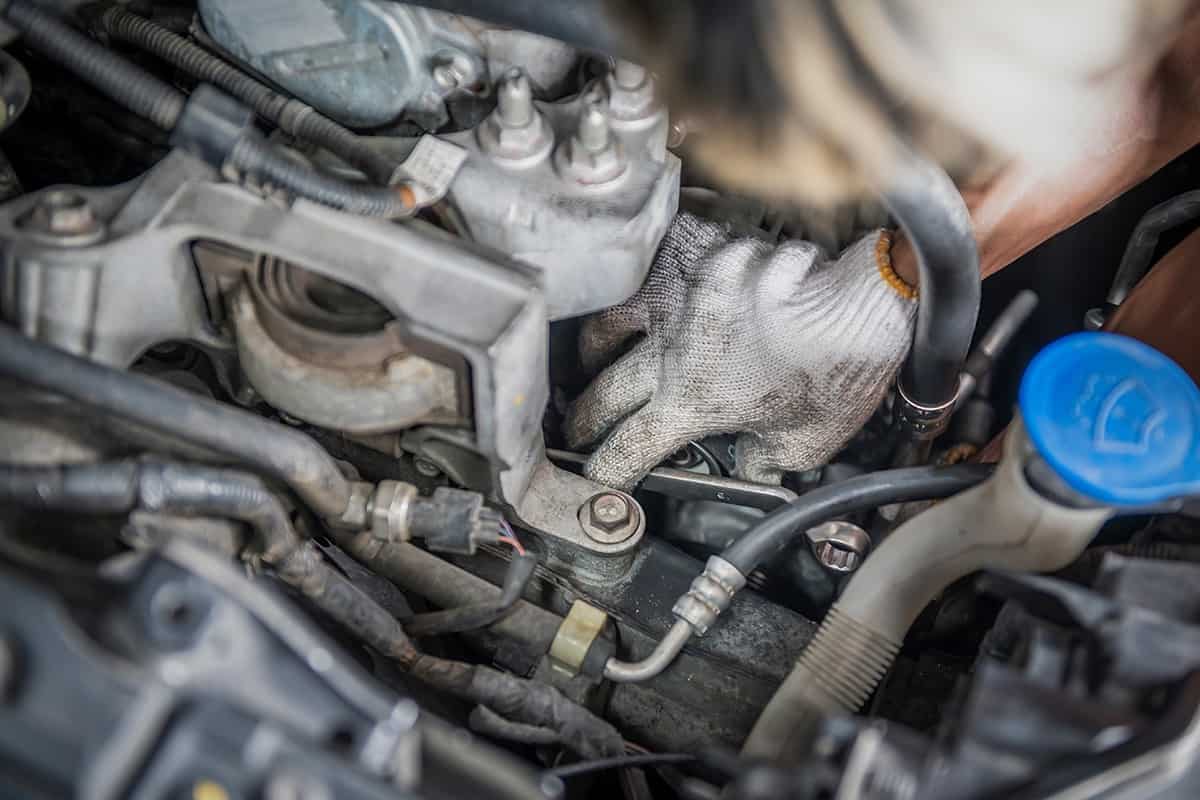
Imagine that you're driving along, enjoying the open road, and suddenly, you hear an unfamiliar noise coming from your engine.
Your serpentine belt might have just given up on you. But fear not! We're here to help you navigate the process of replacing it.
The process of replacing a serpentine belt can be relatively simple, depending on the make and model of your car.
To make your life easier, make use of a few essential tools, such as a long-handled ratchet, a serpentine belt tool, or a socket on the hex-shaped protruding nut.
Slowly rotate the tensioner arm as far as it will go, then release the tension to remove the old belt.
Familiarizing yourself with these tools and techniques will help boost your confidence as you tackle this project.
Now, before we talk more about whether replacing a serpentine belt is an easy job, let's look at some factors that may impact the process:
- Accessibility: Some vehicles have serpentine belts that are more accessible than others. If your car's belt is easy to reach, the replacement process will likely be a breeze.
- Routing diagram: A serpentine belt routing diagram can be a lifesaver. This diagram shows you the precise path the belt should take, ensuring you install it correctly. Without this vital information, the process becomes more challenging.
- Vehicle experience: If you've worked on cars before and have a good understanding of their inner workings, you'll naturally find the process easier. However, if you're a first-timer, it might take some more time and patience to complete the task.
Driving With A Broken Serpentine Belt
Imagine you're cruising down the highway on a beautiful sunny day when suddenly, you notice something seems off with your car.
The dashboard lights flicker, the engine temperature starts to rise, and your air conditioning suddenly stops working. These are all signs that your serpentine belt may be in trouble. So, what do you do now?
Let's dive into the world of broken serpentine belts and find out if you can keep driving and what happens if the belt breaks while you're on the road.
Can I Drive With A Broken Serpentine Belt?
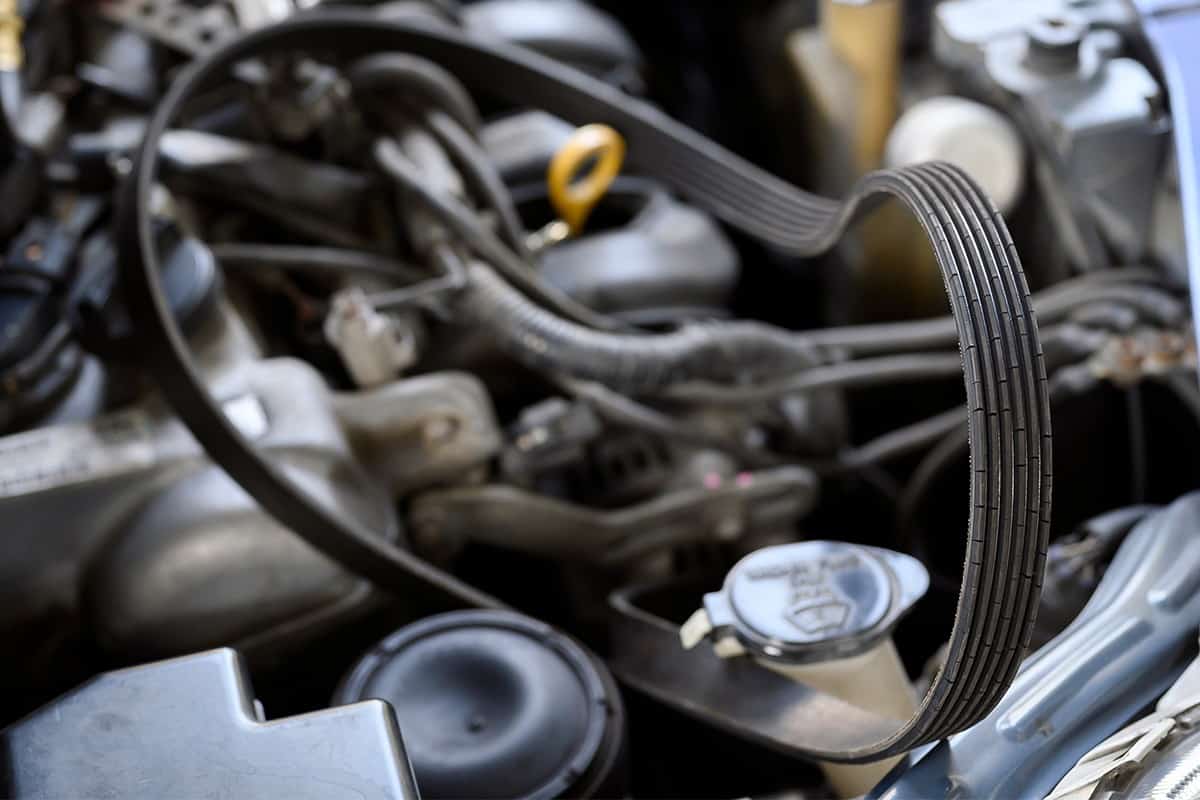
The moment you've been waiting for: can you actually drive with a broken serpentine belt? Well, the answer is not so simple.
Technically, your car might be able to run for a short period with a broken belt, but the risks that come with it are not worth the gamble.
Depending on the weather conditions and the charge in your battery, you could potentially drive for 20 to 90 minutes before running into serious issues. However, it is essential to understand that driving with a broken serpentine belt is highly discouraged.
You see, the serpentine belt is responsible for powering several essential components in your car, including the alternator, water pump, and power steering.
Without a functioning serpentine belt, these systems will fail, and driving can become extremely dangerous.
What Happens If the Belt Breaks While Driving?
Now that you know driving with a broken belt is not advisable, let's explore what happens if the belt breaks while you're on the road.
The first thing you'll likely notice is that your car starts to overheat quickly, especially on hot days, due to the water pump no longer working properly.
Your power steering may fail abruptly, making it difficult to control the vehicle. Additionally, the battery will start to deplete, leaving you stranded once it's completely drained.
In some cases, a broken serpentine belt might also cause damage to other car parts, depending on how it breaks and impacts the surrounding components.
Fixing this damage can take days (and not to mention the costly repairs you'd incur).
Putting your safety and the well-being of your vehicle first is crucial. Always be attentive to the signs that your serpentine belt may be in trouble and seek professional help when needed.
Serpentine Belt Costs And Causes
Imagine getting ready for a road trip and suddenly, you hear a terrifying squealing sound coming from under your car's hood.
Panic sets in as you consider what might be causing the noise. And that's when the questions arise: is it the serpentine belt? How much will it cost to repair? Why did it break in the first place?
Fear not, because we are here to shed light on serpentine belt costs and causes, providing you with peace of mind and answers to your burning questions.
How Much Should It Cost To Replace A Serpentine Belt?
The cost of replacing a serpentine belt can vary depending on factors such as your vehicle's make and model and your geographic location.
On average, you can expect to pay between $58 and $126 for the replacement service, which includes the cost of the belt itself and labor charges.
It's important to remember that these figures are based on national averages and do not factor in taxes or fees specific to your locale. Let's break it down further:
- Parts cost: Usually ranges from $40 to $75
- Labor cost: Typically falls between $58 to $126
What Causes A Serpentine Belt To Break?
Understanding what causes a serpentine belt to break can help you identify potential issues and take preventive measures. Below are some common factors that can lead to serpentine belt failure:
- Normal wear and tear: It is inevitable that over time, a serpentine belt will wear out and need replacement. With proper maintenance, however, a serpentine belt can last up to 100,000 miles.
- Misaligned pulleys: If the pulleys in your vehicle's engine are misaligned, it can cause the belt to break or stretch, leading to premature failure.
- Fluid contamination: Exposure to oil or coolant can weaken a serpentine belt, causing it to slip or break. Regularly inspect your engine for leaks and address any issues promptly.
- Debris: Sometimes, debris such as gravel, rocks, or road salt can get lodged in the serpentine belt, leading to damage and eventual breakage.
By being aware of these potential causes and checking on your vehicle's serpentine belt regularly, you can prevent unexpected failures and maintain the longevity of your car's essential systems.
Identifying A Bad Serpentine Belt
So, you're suspecting something might be wrong with your serpentine belt? No worries, we're here to help you determine whether it's time for a replacement.
Recognizing the symptoms of a bad serpentine belt is vital for your engine's well-being and for your own safety on the road.
In this section, we'll dive into the signs that indicate your serpentine belt might be failing, and we'll equip you with the knowledge you need to assess its condition. So, hang tight, and let's get started!
How Do I Know If My Serpentine Belt Is Bad?
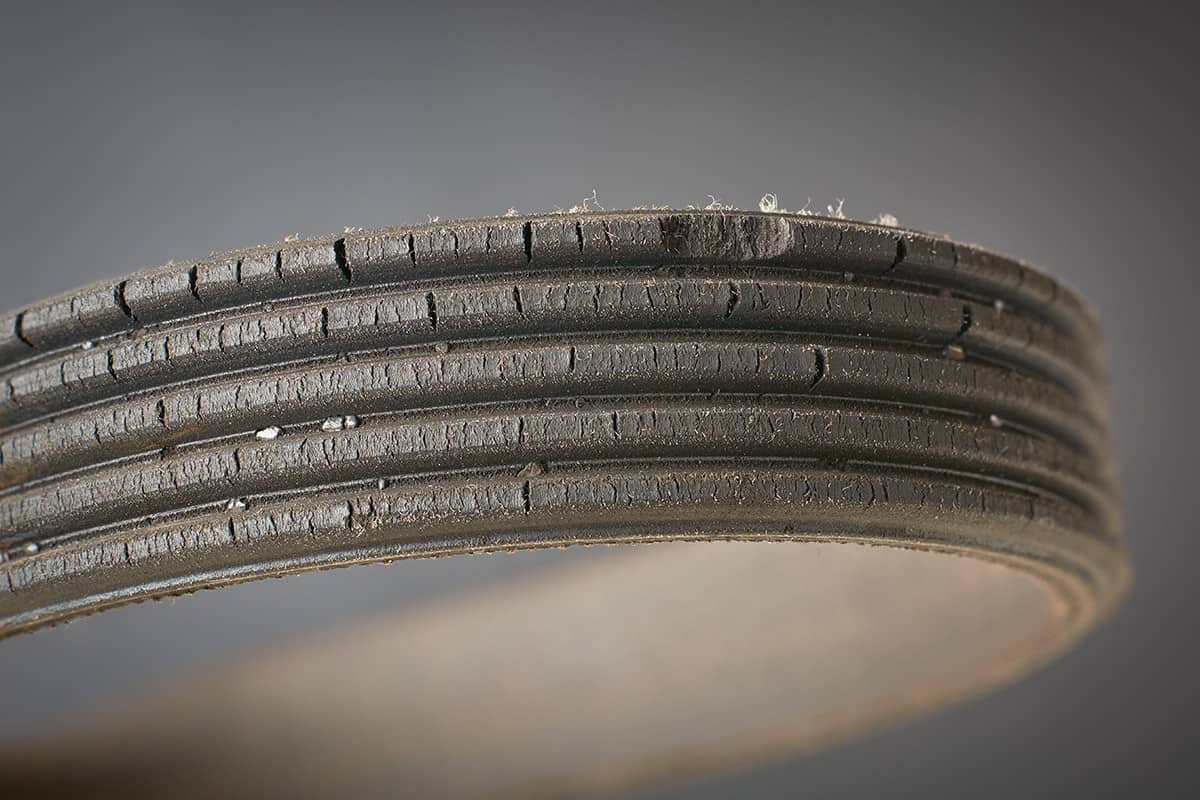
Keep an eye (and an ear) out for these red flags that suggest your serpentine belt might be in trouble:
- Squealing noises: One of the most common symptoms of a bad serpentine belt is a high-pitched squealing noise coming from the engine. This usually occurs when the belt is loose or worn out.
- Power steering issues: If your power steering starts acting up, it could be a sign that the belt is slipping or failing to drive the power steering pump properly.
- Overheating: Your vehicle's cooling system relies on the water pump, which is driven by the serpentine belt. A failing belt can cause the water pump to underperform, leading to engine overheating.
- Battery warning light: The alternator, which charges the battery, is also driven by the serpentine belt. A worn or damaged belt may lead to a warning light indicating battery problems.
If any of these symptoms appear, it's essential to take a closer look at your serpentine belt and assess its condition.
How To Know If My Serpentine Belt Needs Replacing?
Once you suspect that your serpentine belt might be bad, the following steps will help you determine whether it's time for a replacement:
- Visual inspection: Check your serpentine belt for signs of wear, such as cracks, fraying, or missing rib sections. If the belt appears worn, it's a clear indication that it's time for a replacement.
- Tension check: Ensure there's proper tension in the belt. If it's too loose or too tight, it can cause problems with the various components driven by the belt, such as the alternator, water pump, and power steering pump. Refer to your vehicle's manual for the correct tension specifications.
- Mileage: Most serpentine belts are designed to last at least 50,000 miles. If you've reached this mileage, it might be a good idea to replace the belt as part of your vehicle's regular maintenance.
By paying attention to these warning signs and performing regular checks, you'll be able to identify a bad serpentine belt and replace it before it causes more significant issues for your engine.
Now that you're equipped with this knowledge, you can rest assured that your serpentine belt is in good shape, and you can keep cruising down the road with confidence.
Check out some of our previously written articles below.

